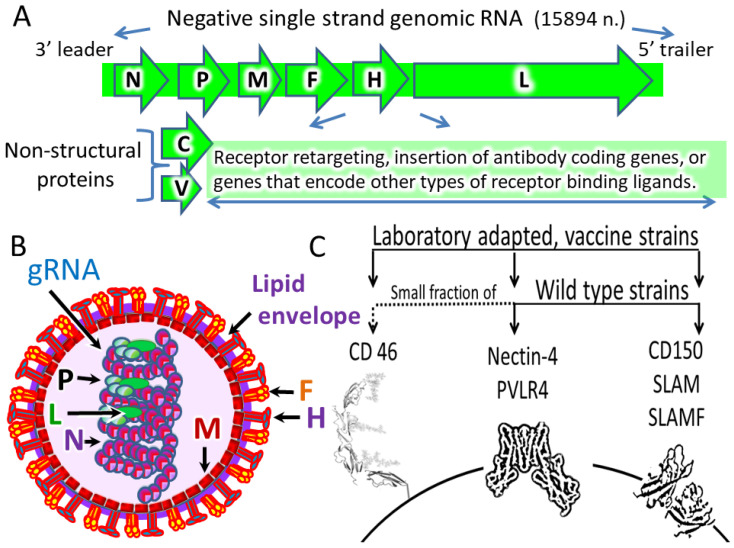Figure 3.
Schematic representation of the MV genome (A), virion (B) and host cell entry receptors (C). The RNA genome (gRNA) contains six transcription units that codes 6 main structural proteins: nucleoprotein (N), phosphoprotein (P), matrix protein (M), fusion protein (F), hemagglutinin (H), and large protein (L) RNA dependent RNA polymerase (RdRp). The viral genome also codes the nonstructural V and C proteins, which are antagonists of host innate immunity. The transcription units for each structural gene are separated by non-transcribed trinucleotide intergenic sequences and together are flanked by short leader and trailer sequences containing the genomic promoter (on the minus strand) and the antigenomic promoter (on the plus strand). Inside the virion, genomic RNA forms a complex with N, L, and P proteins. The virus is enveloped by a lipid membrane that has glycoproteins H and F associated with it as virion surface proteins. These proteins coordinate how the virus finds cells and enters them. For H protein, three receptors have been identified: Complement regulatory molecule CD46, the cell adhesion molecule nectin-4 and the signaling lymphocyte activation molecule (SLAM). MV wild-type strains use SLAM and nectin-4 as cell entry receptors. Vaccine strains and a small fraction of wild type strains, in addition, use CD46 as a cell entry receptor.

